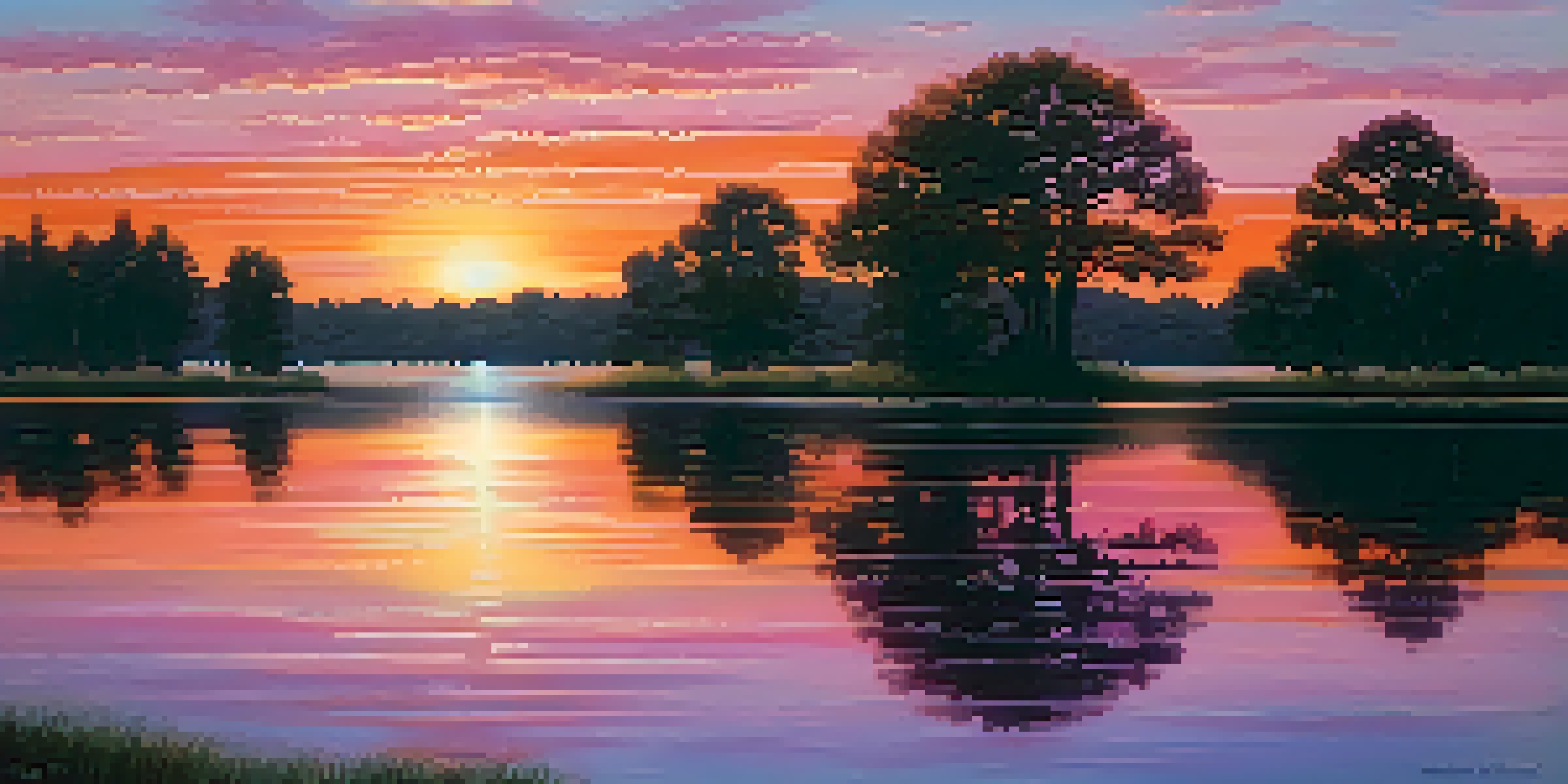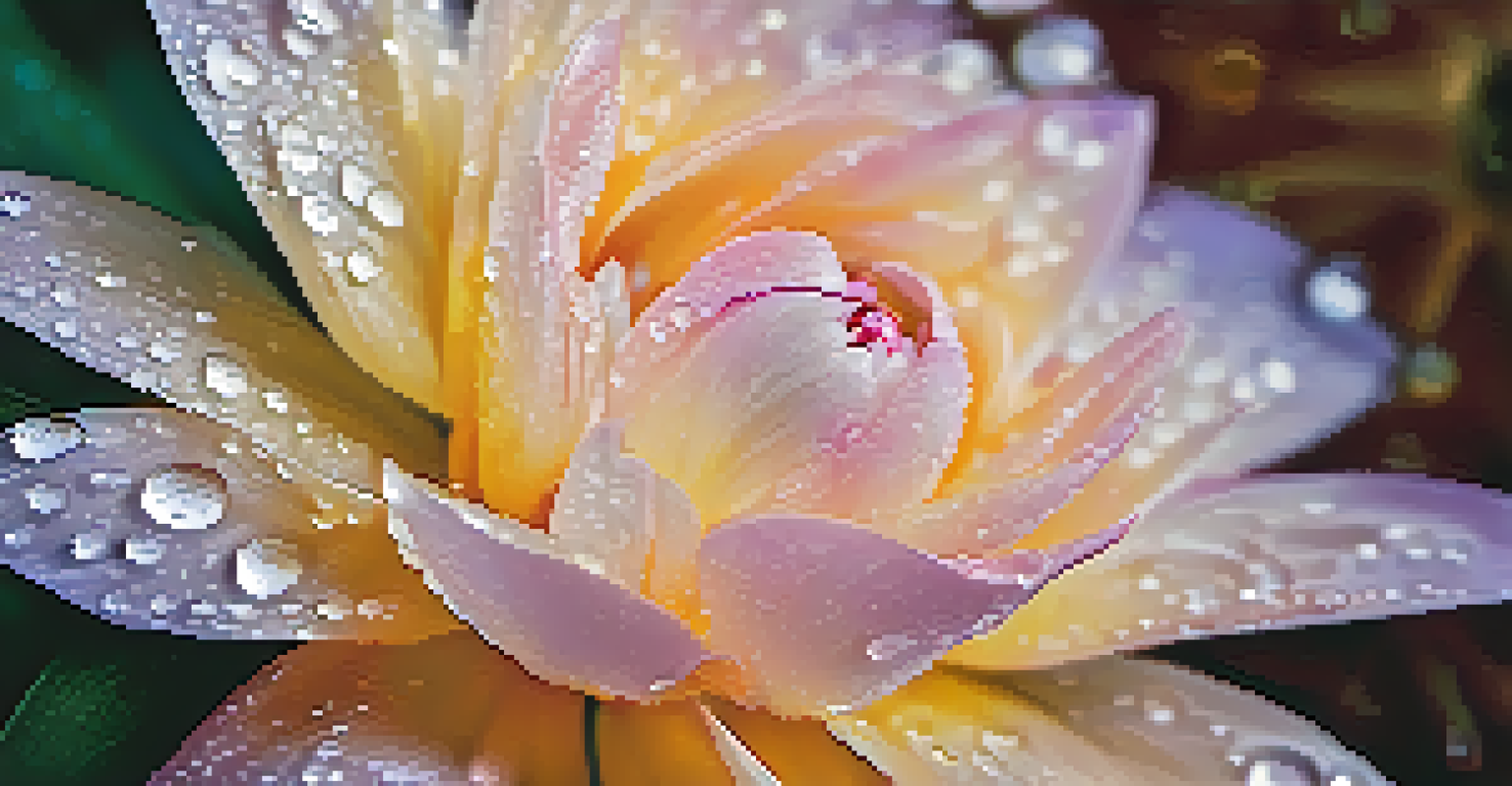AI-Generated Art: Challenging the Definition of Creativity

Understanding AI in the Context of Art Creation
Artificial Intelligence (AI) has become a buzzword in various fields, including art. At its core, AI refers to computer systems that can perform tasks usually requiring human intelligence, such as learning and problem-solving. When applied to art, AI can generate visually striking pieces by analyzing vast amounts of data and identifying patterns. This raises the question: can machines truly be creative, or are they merely mimicking human artistry?
Art is not a mirror held up to reality, but a hammer with which to shape it.
To illustrate this, consider how AI tools like DeepArt and DALL-E work. They take existing artworks and recreate new pieces based on the styles and elements they've learned from the input data. While this can result in fascinating visuals, it brings into question the originality of such creations. Are these AI-generated pieces a reflection of innovation, or are they just rehashed versions of human creativity?
Ultimately, understanding AI's role in art requires us to rethink our definitions of creativity. If creativity is about making connections and producing something new, can AI be regarded as a collaborator in that process? This opens up a broader conversation about the essence of artistic expression and the tools we use to achieve it.
The Debate Over Authenticity in AI Art
One of the most heated discussions surrounding AI-generated art centers on authenticity. Many traditionalists argue that art must stem from human experience and emotion, something that AI cannot possess. This perspective holds that true creativity is inherently tied to the artist's intent and personal journey, which AI simply cannot replicate.

Conversely, proponents of AI art argue that the medium should not dictate the value of the work. Just as photography and digital art once faced skepticism, AI-generated art is now carving out its own identity. For instance, when an AI-generated painting sells for thousands at an auction, it challenges our preconceived notions of what constitutes valuable art.
AI Challenges Art's Definition
AI-generated art prompts us to rethink creativity and its relationship with human expression.
Navigating this debate requires an open mind. If we view art as a form of communication, AI can be seen as a new language—one that expands our understanding of creativity rather than diminishes it. This evolving landscape invites us to explore how technology and human expression can coexist.
The Role of Human Input in AI Art Generation
Despite the capabilities of AI, human input remains a crucial element in the art generation process. Artists often serve as curators, selecting data sets and defining parameters that shape the final output. This collaborative dynamic between human intent and machine execution suggests that AI is a tool rather than a standalone creator.
The greatest artist is not necessarily the one who creates the best work, but the one who embraces the potential of new mediums.
For instance, artists like Refik Anadol use AI to transform data into immersive installations, demonstrating how human vision can guide AI's creativity. By directing AI's capabilities, artists can explore new realms of expression that were previously unimaginable. This partnership allows for a richer artistic dialogue that combines technology with human emotion.
As we delve deeper into this collaboration, it becomes clear that the boundaries of creativity are expanding. While AI can generate art, it is the human touch that often infuses these works with meaning and context. This synergy prompts us to reconsider our understanding of authorship in the digital age.
AI Art: A New Medium for Expression
AI-generated art offers a fresh medium through which artists can express their ideas and emotions. Just as painters have embraced oils and watercolors, today’s artists can wield algorithms and machine learning as their brushes. This evolution not only diversifies the artistic landscape but also democratizes art creation, making it accessible to those without traditional skills.
Take the example of generative art, where artists create algorithms that produce unpredictable outcomes. This unpredictability can lead to unique pieces that surprise both the artist and the viewer. By embracing AI as a medium, artists can push the boundaries of their creativity and explore concepts that may have been out of reach before.
Human Input Shapes AI Art
The collaboration between artists and AI highlights the importance of human input in the creative process.
Moreover, AI art can engage audiences in new ways, inviting interaction and participation. In an age where technology permeates our daily lives, AI-generated art fosters a dialogue about the relationship between humanity and technology. This ongoing conversation is essential as we navigate the complexities of creation in the digital era.
The Emotional Impact of AI Art on Viewers
One might wonder if AI-generated art can evoke emotions comparable to traditional works. While some argue that the lack of human experience in AI art diminishes its emotional weight, many viewers report feeling a connection to these pieces. The intrigue surrounding how such art was created often adds an additional layer of engagement.
Take a look at the works of artists like Anna Ridler, who utilizes AI to explore themes of memory and nostalgia. Her pieces convey a sense of longing that resonates with viewers, regardless of the art's origins. This suggests that the emotional impact of art may not solely depend on the artist’s human experience but also on how the viewers interpret and relate to the work.
In a digital world where technology shapes our interactions, AI art challenges us to redefine our emotional responses. The ability of AI to generate art invites us to consider what we value in creativity and how we connect with artistic expression on a deeper level.
Ethics and Ownership in AI-Generated Art
As AI-generated art gains popularity, ethical questions surrounding ownership and copyright come to the forefront. If an AI creates a piece of art, who holds the rights—the programmer, the user, or the AI itself? This ambiguity complicates how we view authorship and ownership in the digital landscape.
For example, when an AI generates a painting based on the styles of famous artists, does it infringe on their rights? The art community grapples with these questions as the lines between inspiration and imitation blur. Establishing clear guidelines is crucial to ensure that both human artists and AI creators can coexist ethically.
Ethics of AI Art Ownership
The rise of AI art raises critical questions about authorship and copyright in the digital age.
Addressing these ethical dilemmas requires collaboration among artists, technologists, and policymakers. As we navigate the complexities of AI-generated art, it’s essential to foster an environment that respects both human creativity and technological innovation. This balance is key to shaping the future of art in a world increasingly influenced by AI.
The Future of Art in the Age of AI
Looking ahead, the future of art in the age of AI is both exciting and uncertain. As technology continues to evolve, we can expect to see even more innovative forms of artistic expression emerge. Artists may increasingly integrate AI into their creative processes, leading to hybrid works that blend human and machine contributions.
Moreover, as AI tools become more sophisticated, they may challenge traditional artistic norms and expectations. The art world might witness a shift in how we perceive creativity, originality, and even the role of the artist. This transformation could create space for new genres and movements that redefine what art can be.

Ultimately, the intersection of AI and art invites us to engage in a broader dialogue about creativity and technology. By embracing this evolution, we can forge a path that honors the rich history of art while exploring the limitless possibilities that lie ahead. The journey of discovery is just beginning, and it promises to be nothing short of remarkable.